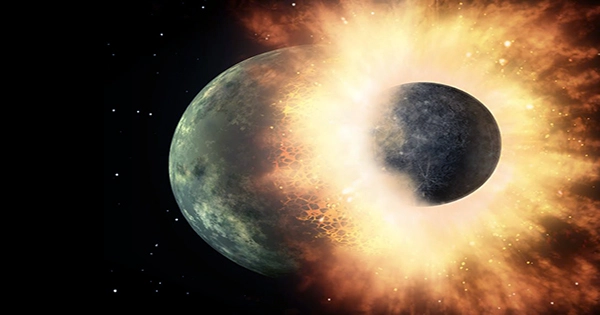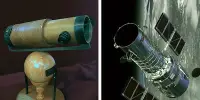We frequently forget the etymology, or origin, of a name. We astronomers are especially prone to overlook that constellations have their own stories, which are frequently linked to Greco-Roman culture, the Renaissance, or the scientific and technological advancements brought on by the Enlightenment, with the southbound discoveries.
Constellations are collections of stars that have accidentally aligned themselves. They are not physically related to one another and, with certain exceptions, are not at the same distance or age. Their main distinguishing characteristics are their close proximity to one another as they project on the sky’s surface and their brightness, which makes them stand out. However, because each constellation can be easily recognized and viewed at various times of the year, their peculiar shapes have helped navigation and marked the changing of seasons.
In actuality, astronomy has been mentioned in literature before in Western classics. Homer asserts or depicts that the Earth is flat, that the Sun, Moon, and stars revolve around our world, that they rise in the East, and that they set in the West in the ocean, in both “The Iliad” and “The Odyssey.” Even though this peculiar journey is only fully depicted in later portrayals, they most likely travel through the North to return to where they started. Homer also cites the morning and evening stars, although he is unaware that Venus is one of them.
Additionally, he discusses Orion, the constellations of Ursa Major and Boötes, as well as the stellar groupings the Pleiades and Hyades. Arcturus, the brightest star in the Boreal Hemisphere, is included in Boötes. The Ursa is remarkable in that it never sets in the ocean, which is crucial for navigating and being able to locate the North. For Odysseus and his journey back to Ithaca, it was crucial.
If Homer was the real author of these and other lesser-known texts, then these two authors could have been contemporaneous, and when we compare them, we find both similarities and differences. For example, they both mention the same celestial objects, which may indicate that the other planets had not yet been recognized as such by the eighth century BCE (or at least the archaic period, considering the uncertainty about dates).
Hesiod, on the other hand, is considerably more particular and in-depth when it comes to how astronomical occurrences serve as markers for dates and agricultural occasions; he makes sure to mention the solstices and the lunar phase, which he takes to be 30 days in duration. The fundamental difference between these two writers is that Homer produced epic poems that extol the virtues of warrior heroes, whereas Hesiod is more practical and only discusses daily tasks. Although less desirable, this is a necessity for civilisation. It is also claimed that Hesiod wrote a poem called “Astronomy,” of which only a few fragments remain today. But there have been controversies regarding the author’s identity.
The poet Aratus described how the Greeks and Phoenicians used different constellations to define the North in his «Phaenomena» lyric from the third century BCE: the Greeks used Ursa Major (Helice), while the Phoenicians used Ursa Minor (Cynosura in the poem). According to Callimachus, Thales of Miletus advised using Ursa Minor for navigation in the sixth century BCE because it contains the genuine North Pole (or is closer to it given that its location changes over time due to the “precession of the equinoxes” effect).
Shortly after, Eratosthenes — or most likely a later author writing under his name — claimed that the Pleiades and Hyades are both groupings of sisters who through a number of adventures. Since they formed from the same cloud of dust and gas and have physical connections between their members, these stellar associations could technically be considered twin systems (they are the same age but different individual properties). However, the stars in the fall-dominant constellation of Orion are only connected because they are reflected in the same direction by the celestial sphere. At least, it is what we believed until very recently.
It’s always intriguing to learn the backstory of a constellation’s main character. A term derived from Eratosthenes’ writings describes this as catasterism: the transformation of a figure—generally a mythological one—into a star or constellation. It frequently resulted from the Olimpean Gods’ involvement. However, in a stunning display of courtly skill, Eratosthenes raised the Egyptian queen Berenice II, the wife of the Hellenic king Ptolemy III Euergetes, to the heavens. He particularly appreciated the beauty of her hair, which later became the constellation of Coma Berenice. Conon of Samos may have also conjured the story that a deity demanded a lock of the queen’s hair in exchange for the king’s safe return from the Third Syrian War. Later astronomers repeated this praise, possibly out of gratitude or most likely to gain favor.
Among other constellations, Perseus is especially noticeable in the summer. August meteor showers are known as Perseids because of this constellation. This Greek hero’s life is characterized by destiny and prophesy. He was to assassinate and succeed the king as he was the son of Danae and Zeus and the grandson of Acrisius, the king of Argos. One of Titian’s most well-known works, and maybe one of the most sensuous Renaissance paintings, shows his conception by the Lord of Olympus (as a shower of gold). The tragic nature of Perseus’ tale is evident in the numerous fratricide disputes, unhappy sexual liaisons, plots, and jealousy displayed by both humans and gods.
It is also an epic tale since Perseus engages in hand-to-hand combat and vanquishes supposedly unkillable monsters like Medusa, who turned everyone who looked into her eyes to stone. With a protagonist who is equally educated but perhaps more courageous, this is an epic that is unquestionably on par with “The Odyssey.” Odysseus, a more well-known character, is not someone Perseus should be envious of. Although this was a genuine Greek tragedy, it’s fascinating to note that no plays directly related to it have survived; nonetheless, Calderón de la Barca did write one comedy, Andrómeda y Perseo. The constellation can be seen on fall nights in the Northern Hemisphere, while other times of the year can also see it because of its declination.
We may list every traditional constellation that can be seen from the Northern Hemisphere along with its corresponding catasterism. But the examples from above ought to be sufficient.
Gaius Julius Hyginus, a freedman of the emperor August who may have been from Hispania and who lived around the turn of the century, presented several examples of this in “Poeticum astronomicum.” However, it is unclear who wrote this text as well as the other, “Fabulae.” This is a key source—and occasionally the only one—on mythology and astronomy. In his work “Almagest,” Claudius Ptolemy described 48 constellations just over a century later.
The celestial sphere provides us with a wealth of information regarding astronomy, as well as the development of philosophy from myth to science, the exploration of our globe and the practices of commercial and imperial expansion, scientific advancement, and creative inspiration. In a nutshell, this is an intellectual map that has influenced the growth of culture and, more importantly, thought.
















